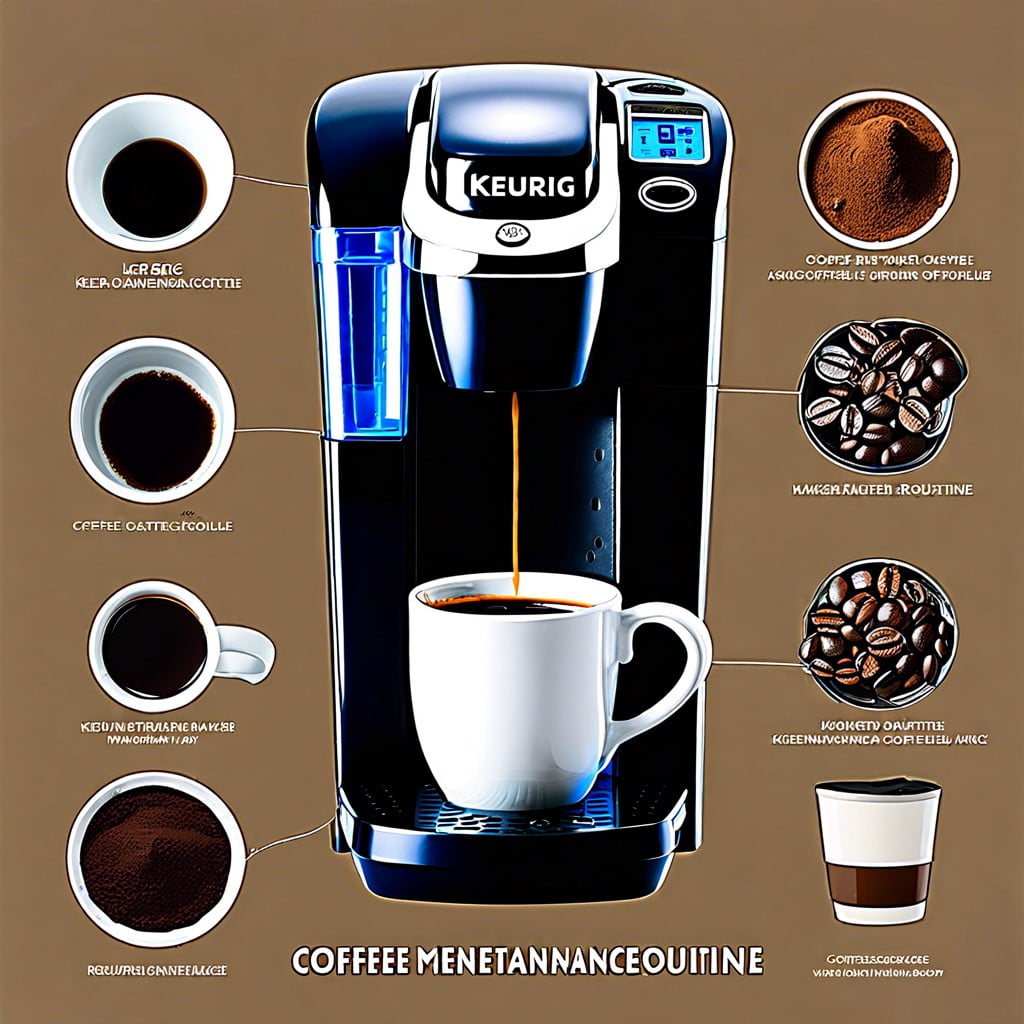Learn the steps to effectively clean your Keurig coffee maker for consistently great-tasting brews.
How Often to Clean a Keurig Coffee Maker

Regular cleaning keeps your machine in top shape and your coffee tasting great. Aim to clean removable parts and wipe down the machine’s exterior daily. A deeper clean, known as descaling, which removes mineral buildup, should be done every 3 to 6 months. The frequency can vary with water hardness and how often you use the brewer. If the coffee starts to taste off or the machine operates slowly, it might be time for a clean. Keep an eye out for indicator lights that signal when your Keurig needs maintenance. Remember, a clean machine is the secret to a perfect cup of joe.
What You’ll Need
Before diving into the cleaning process, gather these essential items:
- Dish soap: A gentle but effective cleanser for dissolving coffee oils and removing residue from removable components.
- Soft cloth or sponge: For wiping down surfaces without scratching.
- White vinegar or Keurig’s descaling solution: Both are effective for breaking down mineral buildup; the choice hinges on preference and availability.
- Large ceramic mug: To catch the hot vinegar or descaling solution as it runs through the brew cycle.
- Access to a sink: For washing the removable parts and dispensing used cleaning solutions.
- Dry towel or drying rack: To air-dry the cleaned components before reassembling your coffee maker.
Assembly of these supplies facilitates a smooth and efficient cleaning routine, leading to better-tasting coffee and prolonged machine life.
Step 1: Take Out All Parts
Begin by powering off your Keurig machine for safety. Carefully disassemble the detachable components: the water reservoir, its lid, the drip tray and cover, and the K-cup holder. These parts are in frequent contact with water and coffee grounds, meaning they are prone to moisture buildup and residue. Removing them reveals the machine’s inner surfaces, where hidden grime and coffee oils can lurk, impacting the flavor of your coffee and possibly obstructing the water flow.
Handle each piece gently to avoid damage. Check for any coffee grounds or debris and brush them out. Remember that regular cleaning of these components is crucial for maintaining the machine’s performance and hygiene. Keep an eye on the needle that punctures the K-cups; it’s a hotspot for buildup and should be clear of obstructions.
Step 2: Wash All Parts in Sink With Soapy Water
Once dismantled, give each component a spa day in your sink. Lather them up with your favorite dish soap and show the water reservoir, pod holder, drip tray, and all other removable parts some love with a soft sponge or cloth. This step is the unsung hero in your coffee maker’s life, sluicing away old coffee oils and particle build-up that can turn your morning cup from “ahh” to “bleh.” Remember, these parts often hide the grubby little secrets of spillage and splatter, so elbow grease is your friend here. For those hard-to-reach spots, a small cleaning brush or toothbrush can be your trusty sidekick, whisking away any stubborn grime. After scrubbing, give everything a thorough rinse under warm water to wash away any soapy residue. We’re doing a clean act, not a bubble bath after all. Carefully dry each piece with a clean dish towel or let them air dry on a dish rack, because moisture is a playground for bacteria, and we’re not inviting them to our coffee party.
Step 3: Rinse and Dry
After you’ve given all the removable components a good scrub, it’s time to focus on getting rid of soap residue. A thorough rinse under warm, flowing water does the trick. Don’t skimp here; leftover suds can sneak into your next brew, turning your cup of Joe into a soapy surprise.
Lay out a clean dish towel and place the parts on it to air dry. They need to be completely dry to prevent any unwanted mold or bacteria from joining your coffee routine. If patience isn’t your virtue, a soft, lint-free cloth can speed things up. Just be gentle – your Keurig parts are tough but not invincible.
Remember the water reservoir? Give it extra attention during rinsing, as it’s where your coffee begins its journey. The cleaner it is, the fresher your beverage. Now, with everything rinsed and dried, you’re one step closer to a pristine coffee experience.